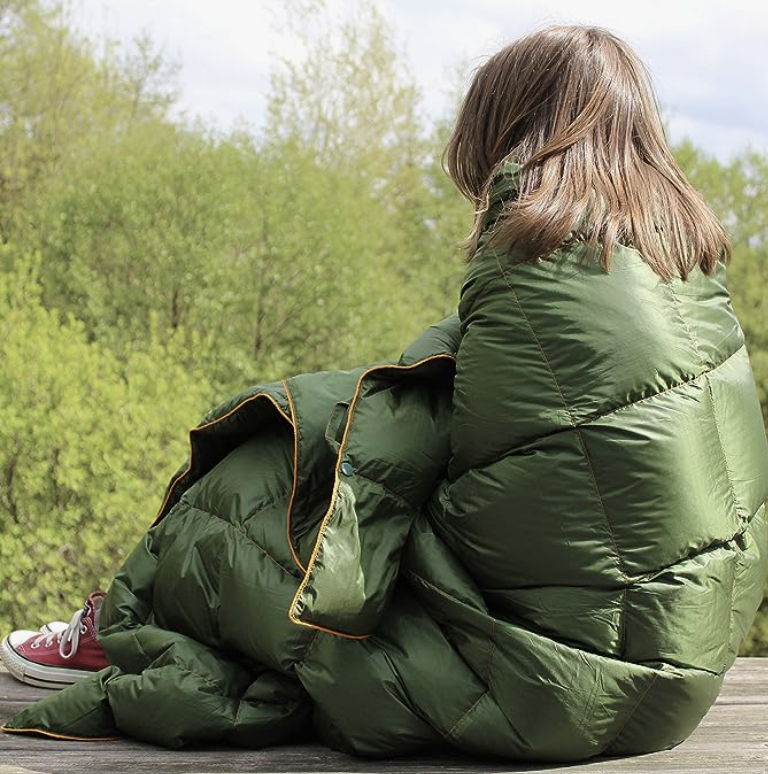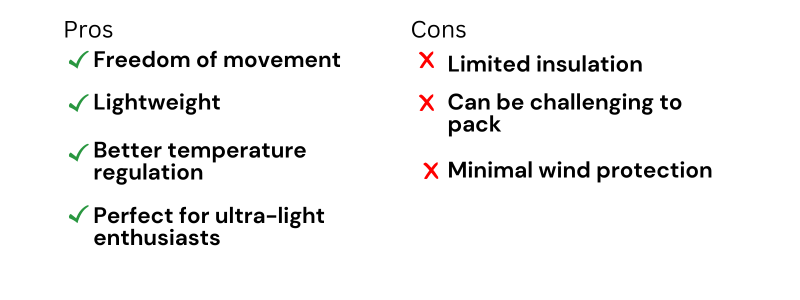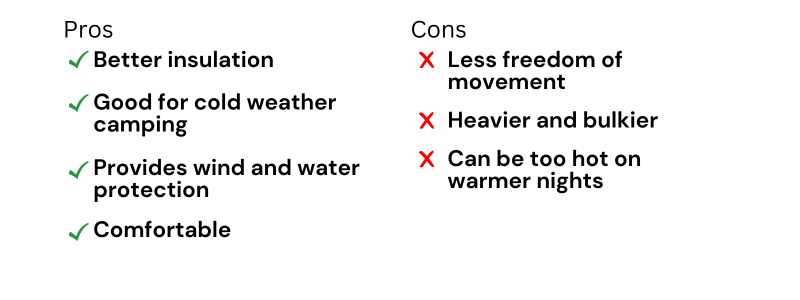Camping Quilt vs. Sleeping Bag: Pros and Cons
Introduction
Camping can be one of the most exciting outdoor activities to experience. The chance to explore nature, bond with family and friends, and create memories that last a lifetime. One of the most important camping accessories to have is sleeping gear. No longer do you just have to use a sleeping bag. It is just as popular right now to choose a camping quilt. In this blog post, we’ll compare the two and help you make the best decision for you.
Camping Quilts

Camping quilts are a relatively new addition to the world of camping gear. They are essentially a blanket with a lot of insulation. It’s made with a variety of materials but typically includes a comfortable layered construction like down or synthetic fill, making it lightweight.
One of the main benefits of a camping quilt is that they are generally lighter and more compact than a sleeping bag. They are also easier to get in and out of, making them a good choice for those who tend to get up in the night.
Using a quilt when camping provides considerable freedom of movement and the ability to regulate your temperature better. If you’re someone who tends to get hot quickly and then cold after a while, then a camping quilt would be a good option for you.
The quilt is also great for ultra-light enthusiasts that need to minimize their packing weight and makes them ideal for backpackers or anyone who is short on storage space.
One of the drawbacks of camping quilts is that they don’t offer the same level of protection from the elements as a sleeping bag. Since they don’t have a hood or a built-in footbox, they are best used in warmer weather or in combination with a bivy sack. They also require some practice to get the hang of using them effectively.

Sleeping Bags

A sleeping bag is a standard option for most campers because of its ability to provide warmth on cold nights, water resistance, and excellent wind protection. They come in a variety of weights and insulation levels, making them suitable for different climates and conditions. They are also more versatile than camping quilts since they offer full coverage from head to toe.
One of the main benefits of sleeping bags is their ability to keep you warm in even the coldest weather. I find this means for me that I can keep warm from my neck to my toes within the bag and am less likely to lose heat. A sleeping bag can also be very comfortable, providing a range of temperature regulation, and padded insulation underneath you. If you are like me and get cold at night, this is a good choice.
One of the drawbacks of sleeping bags is that they can be heavier and bulkier than camping quilts. This can make them less suitable for backpackers or anyone who is short on storage space. They can also be more difficult to get in and out of, which can be a problem for those who need to get up in the night.

Which one is the best choice?
When it comes to deciding which one is the best for you, it largely depends on your camping preferences. If you are an ultralight adventurer or camp in warmer weather conditions, then a camping quilt is a better option. However, if you are subject to cold weather conditions or are looking for a comfortable camping experience, sleeping bags are the way to go.
My Personal Choice
My personal choice, when it comes to sleeping gear, is a combination of both a camping quilt and a sleeping bag. When I’m trekking or backpacking, I prefer using a sleeping bag for insulation – I get cold really easily! However, when I’m comfort camping with friends and family, I enjoy using the quilt and blanket style which gives me a more home away from home feeling. I also like the fact that I can unzip my sleeping bag and use it as a cozy warm pad underneath my quilt. This also minimizes the amount of gear I need to bring with me.
In the end, both camping quilts and sleeping bags have their own benefits and drawbacks. Finding the right fit for you depends on your specific needs and preferences.
Final Thoughts
Camping quilts and sleeping bags are both critical components for any camping trip, and the choice between the two ultimately comes down to your seasonal preference and how you like to spend your nights under the stars.
Whatever your preference is, a good night’s sleep can make or break a camping adventure, so choose wisely and enjoy the great outdoors comfortably.
FAQ’s
Q: What is the best type of insulation for camping quilts and sleeping bags?
A: The best insulating material for camping quilts and sleeping bags depends on a variety of factors, including your budget and the temperature conditions you might experience while camping. Down insulation is considered by many to be one of the best materials out there as it is warm, lightweight, and highly compressible. However, synthetic insulation is also a great option if you are looking for an affordable and sustainable alternative.
Q: Which one works better for camping with a hammock?
A: A camping quilt is the best choice if you plan on using a hammock. Quilts are designed to be used in combination with other gear, allowing you to easily attach it to your hammock for a comfortable night’s sleep. I find that sleeping bags used with hammocks are more difficult to work with due to their shape and size.
Q: What’s the difference between a rectangle sleeping bag and a mummy bag?
A: Rectangle sleeping bags are less restrictive than mummy bags, with more room to move around and a variety of configurations. I generally use a mummy bag on cold-weather treks or cold-weather camping. Mummy bags are designed to conform to the shape of your body, providing more insulation in cold weather. On the other hand, I find rectangle sleeping bags work better for car camping and can be easily shared between two people.
Q: How do I store my camping quilt or sleeping bag?
A: Try to keep your camping gear in a breathable storage bag or container when not in use. This will help prevent any mold or mildew and ensure that they last longer.
Q: Are there any special cleaning instructions for camping quilts and sleeping bags?
A: Yes, I clean mine on a regular basis using a gentle detergent and cold water. Don’t use laundry detergents as they can cause the insulation to break down. I would recommend air-drying for both camping quilts and sleeping bags.




